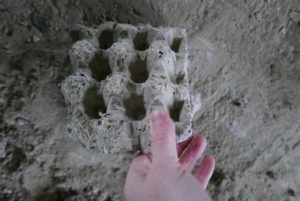
A Norwegian study shows that it is neither agriculture nor individual countries and their industrial output, but household consumers who are by far the biggest drain on the planet. Which makes for a very different picture to purely nation-focused analyses of environmental impact. In other words, before we start blaming whole countries for the state of the planet, we should probably be looking at our own habits and demands.
As architects we feel it is imperative to think about the footprint we design and create. We need to consider, not only the choice of sustainable technologies but also how these are made, what materials they are made from, how recyclable they might be in the future, whether they might be re-purposed and what the cost to the planet is of their production in the first place. Indeed it is estimated that more than 80% of all product-related environmental impacts are determined by product design.
The EU Waste Framework Directive 2008 aims to have 70% of Construction and Demolition waste recycled by 2020. The UK’s own Statistics on Waste (DEFRA, March 2020) claims a C&D recovery rate of 91% which clearly, on the face of it, exceeds the EU directive. However by DEFRA’s own admission, ‘accurately quantifying C&D waste is challenging and …the absolute tonnage figures are subject to a relatively high level of uncertainty.’
Applying sustainable thinking to both demolishing of the old and construction of the new, is notoriously difficult to manage operationally. One of the ‘common hurdles to recycling and re-using Construction and Demolition waste in the EU is the lack of confidence in the quality of C&D recycled materials. There is also uncertainty about the potential health risk for workers using recycled C&D materials’ (EU Construction and Demolition Waste Protocol and Guidelines). In our experience, most building firms are either not informed or not geared up enough to be able to recycle or re-use effectively. On another Paragraph 79 house we are currently designing, we spent a great deal of time calling building and recycling centres in order to source recycled timber. Natural wood products, bricks, steel, lead and aluminium (which can be smelted for re-use) are all truly green products as they can be re-used over and over again.
We are overdue a more thoughtful analysis of where we are on the recycling and re-use of Construction and Demolition waste so that not only are we all more informed on the subject but also are able to more easily access the products we need to build sustainably into the future.
